|
|
|
|
|
|
|
|
|
|
|
|
|
|
|
|
|
|
|
|
|
|
|
|
|
|
|
|
|
|
|
|
|
|
|
|
|
|
|
|
|
|
|
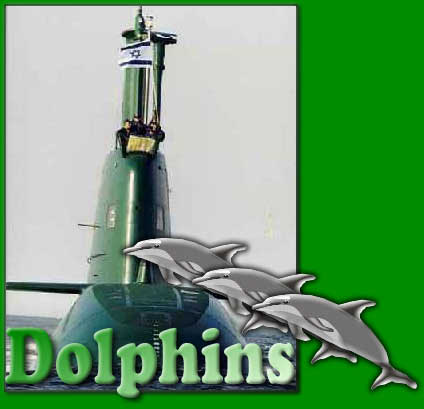 |
|
In
the early 80s' the navy started examining and later
planning the submarine to replace the Gal class. The concept for the forth
generation of Israeli submarines was a tailor-made submarine for Israel's
specific needs. After a long search and consideration Germany was chosen
by Israel to build its new submarines. Israel's Defence Minister at that
time, Yitzahk Rabin approved the project and in August 1989 a contract with
2 German shipyards was signed and the Dolphin class submarine project was
launched. |
|
|
|
|
|
|
|
|
|
|
The
heads of the Israeli Defence Forces, Zahal (IDF) were never navy oriented,
and had a narrow knowledge of naval warfare. The price of one Dolphin
submarine is extremely high, ($340 million). When it comes to cut the
budget, the navy is the first to feel the axe. The land forces and the
airforce will ever come before the navy when it comes to distribution
of resources. In November of 1990, due to heavy budgetary burdens, IDF's
Chief of Staff, Major General Ehud Barak (The current Prime Minister of
Israel) and the new Defence Minister Moshe Arens, decided to call off
the Dolphin Project. Nevertheless, 3 months later, Sadam Hussein Iraq's
leader, by showing a perfect timing, offered his "help" and
saved the project. |
|
|
|
|
|
|
|
|
|
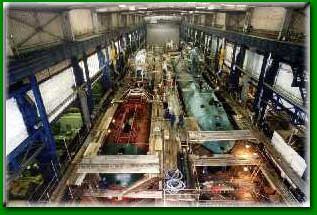 |
|
|
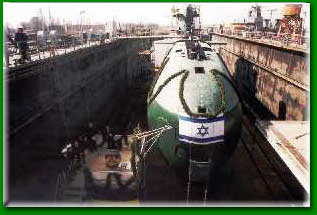 |
|
|
|
|
|
|
|
The
hulls of the Dolphin and Leviathan are being built at Thyssen shipyards
in Emden. |
|
|
The
launching of the Dolphin,
15th April 1996 |
|
|
|
|
|
|
|
|
|
In
January of 1991 the Gulf War begun. Israel was requested by the Western
Allies to sit still while every night, Scud missiles launched by Iraq
hit the centres of Israel's cities. For weeks Israeli citizens were forced
to sit in sealed rooms, wearing gas masks and wait for the chemical warhead
missiles to hit. Israel decided to comply with the request of the USA
and it's allies and did not retaliate. |
|
|
|
|
|
|
|
|
|
|
|
|
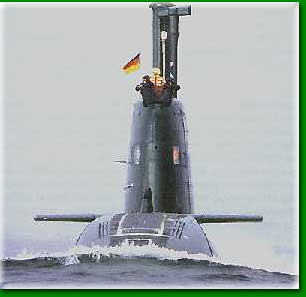 |
|
|
|
|
|
|
|
|
|
|
|
|
|
|
|
|
|
|
|
|
|
|
|
|
|
|
|
|
|
|
|
|
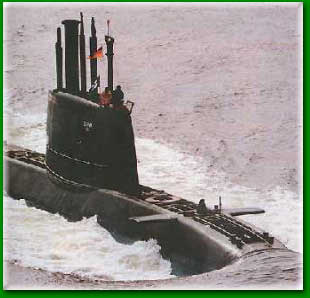 |
|
|
|
|
|
|
|
|
|
|
|
|
|
During
the war, German firms were accused of co-operating with Iraq and assisting
her to produce various types of chemical weapons. Public opinion in Germany
and in Israel was stormy. In an attempt to calm down the hostile atmosphere
against Germany, to compensate Israel for it's economical losses and in
order to maintain the German shipyards occupied, the German chancellor,
Helmut Kohl decided to grant Israel with 2 new Dolphin Class submarines.
(In early 1995, Germany and Israel finalised an agreement for the third
submarine, each country will bear half of the costs.)
|
|
|
|
|
|
|
|
|
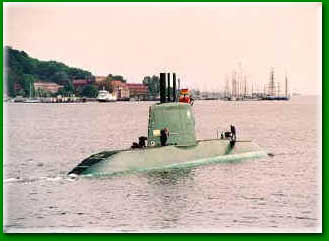 |
|
|
|
|
|
|
|
|
|
|
|
|
|
|
|
|
|
|
|
|
|
|
|
|
|
|
|
|
|
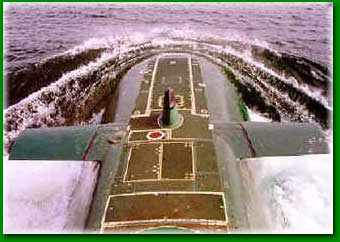 |
|
|
|
|
|
|
|
|
The
Dolphin is the conventional submarine of the 21st century and
is one of the most advanced diesel-electric submarines in the world. The
submarines were built by Thyssen Nordseewerke at Emden and Howaldtswerke-Deutsche
Werft (HDW) at Kiel. The Dolphin is totally automated and computer integrated.
Electronic systems developed by several major Israeli defense companies,
including Tadiran, Israel Air Industry, Elisra, Elbit and Rada. Its sonar
consists of Low Frequency Sonar and passive sonar. Its integrated fire
control system lets it track and evaluate a significantly high number
of targets. |
|
|
|
|
|
|
|
|
|
|
|
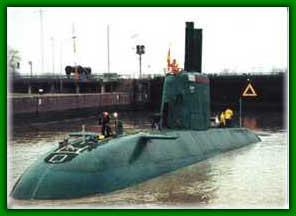 |
|
|
|
|
|
|
|
|
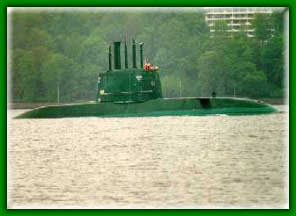 |
|
|
|
|
|
|
|
|
|
|
|
|
|
|
The
Dolphin on her journey from Emden to Kiel, 1996 |
|
|
|
|
|
|
|
|
|
|
|
Those
submarines are amongst the smallest, but they are also among the most
manoeuvrable armed underwater vessels. The co-operation with Israeli highly
advanced electronic firms brought the electronic and the data processing
equipment up to state of the art of weapons technology. Low sound radiation
combined with a streamline design make those diesel-electric powered submarines
difficult to locate and turn them into a lethal weapon. |
|
|
|
|
|
|
|
|
|
|
|
Although
the Dolphins are more than twice the size of the Gals, almost the same
small crew operates them. They have to live, work and sleep in this narrow
steel tube. A combination of specialist know-how, strength character and
a spirit of comradeship, together with the ability to perform under pressure
and not very comfortable conditions, are the essential requirements for
service on the Dolphin submarines.
The Dolphin in Kiel after the transfer from TNSW
shipyards in Emden to HDW shipyard in Kiel
|
|
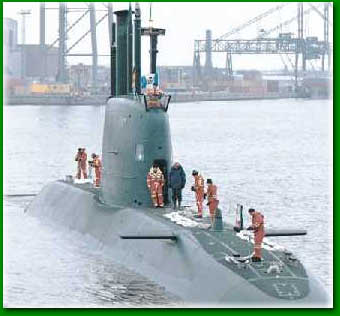 |
|
|
|
|
|
|
|
|
|
|
|
The
Dolphin-class boat are designed for interdiction, surveillance and intelligence
gathering. It can also engage in special-forces operations, including
landing amphibious forces ashore. The boat has 10 torpedo tubes and is
capable of launching Harpoon missiles. While the subs are likely more
important as a nuclear deterrent to land-based attacks, the Dolphin submarines
offers Israel superior naval capabilities to its neighbors, as well. |
|
|
|
|
|
|
|
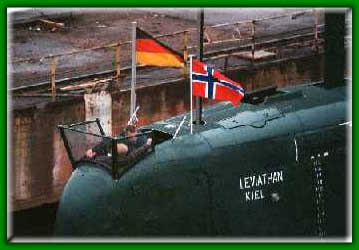 |
|
|
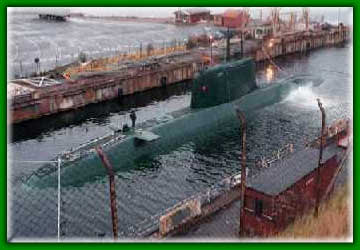 |
|
|
|
Between
the end of 1998 and at the beginning of 2000, the Dolphin, Leviathan and
later the Tekumah, still under German flag moved to the Norwegian port
of Kriestiansand. From the naval base of Marvika they sailed for their
sea and dive trials in Norwegian waters. |
|
|
|
|
|
|
|
|
|
|
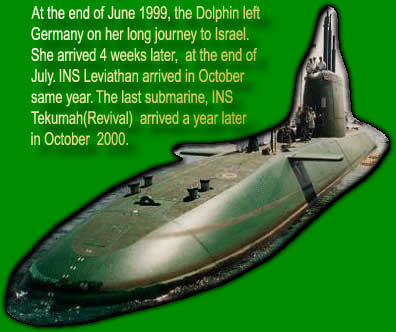 |
|
|
|
|
|
|
|
|
|
|
|
|
|
|
|
|
|
|
|
 |
|
|
|
|
|
|
|
|
|
|
|
|
|
|
|
On
her way to Israel the Dolphin leaps out of the depths
(picture by Roni Shizer and Alex Rozkovsky) |
|
|
|
|
|
|
|
|
|
|
|
|
|
|
|
|
|
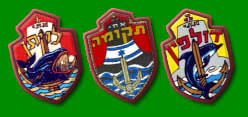 |
|
|
|
|
|
|
|
|
|
|
|
|
|
|
|
|
|
|
A
touching ceremony at sea
On July 25th 1999, two days before arrival at
the port of Haifa, the Dolphin surfaced and stopped over the watery
grave of its predecessor the INS Dakar. Commander of the flotilla and
Dolphin's Chief of the Boat laid wreaths in the water. Crew members
of the Dolphin threw 69 flowers to commemorate the memory of the 69
lost shipmates.
|
|
|
|
|
|
|
|
|
|
|
|
|
|
|
|
|
|
|
|
|
|
|
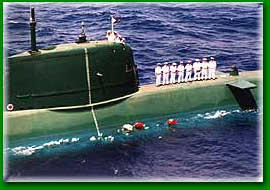 |
|
|
|
|
|
|
|
|
|
|
|
|
On
Tuesday, July 27th 1999, the INS Dolphin arrived at her home
port. The surface fleet and two Gal submarines welcomed her at the bay
of Haifa and escorted the new submarine into the port. Four F-16 jets
brought the greetings of the Israeli Airforce as they swooped down in
a gala fly-past welcome. A festive ceremony with the participation of
the State President, the Prime Minister and the Chief of Staff welcomed
the Dolphin as she docked at submarines pier at Haifa. |
|
|
|
|
|
|
|
|
|
|
|
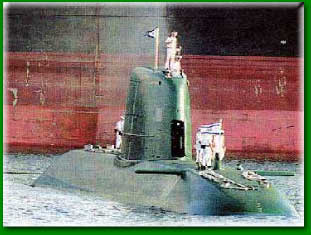 |
|
|
|
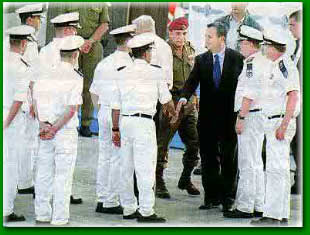 |
|
|
|
|
|
|
|
|
|
|
|
The
skipper of the Dolphin, Commander Eyal gives the final orders of the 4
weeks journey from Germany to Israel |
|
|
President
Weizman, Prime Minister Barak and Chief of Staff Mofaz greet the crewmembers
of the Dolphin. |
|
|
|
|
|
|
|
|
|
|
|
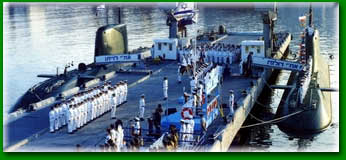 Welcome
ceremony for the INS Leviathan. Haifa, October 1999
Welcome
ceremony for the INS Leviathan. Haifa, October 1999
By courtesy of the Naval Museum(click to enlarge) |
|
|
|
|
|
|
|
|
|
|
|
|
|
General
Characteristics:
(Information from AMI International, Bremerton, WA 98337, USA)
Displacement
tons: 1640 surfaced, 1900 diving
Length : 57.3 m (188ft), Beam : 6.8 m (22.6ft), Height:
12.7 m
Speed: 20 knots submerged, 11 knots snorkeling
Diving Depth: Deeper than 200 m(600 feet)
Range : 4500 miles at 8 knots
Crew : 35+10, Banks : 35, Provision: More than one
month
Armament: Four 650mm(25.6 inch)and Six 533mm(21 inch)bow torpedo
tubes. 6 reloads.
The submarine has the capacity to carry anti-ship missiles, mines, decoys
and STN Atlas wire-guided DM2A3 torpedoes. The surface-to-surface missile
is the submarine-launched Harpoon which delivers a 227 kilogram warhead
to a range of 130 kilometres at high subsonic speed. |
|
|
|
|
|
|
|
|
|
|
|
|
|
|
|
|
|
|
|
|
|
|
|
|
|
|
|
|
|
|
|
|
|
|
|
|
|
|
|
|
|
|
|
|
|
|
|
| 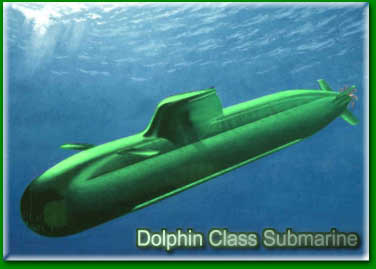
For
more information please visit the following sites:
|
|
|
|
|
|
|
|
|
|
|
 |
|
|
 |
|
|
|
|
|
|
|
|
|
|
|
|
|
|
|
|
|
|
|
|
|
|
 |
|
|
 |
|
|
|
|
|
|
|
|
|
|
|
|
|
|
Designed
and created by Uri Dotan - Bochner
Dot@net
Copyright © 2000, All Rights reserved |
 |
 |
 |
 |
 |
 |
 |
 |
 |
 |
 |
 |
 |
 |
 |
 |
 |
 |
 |
 |
 |
 |
 |
 |
 |
 |
 |
 |
 |
 |
 |
 |
 |
 |
 |
 |
 |
 |
 |
























